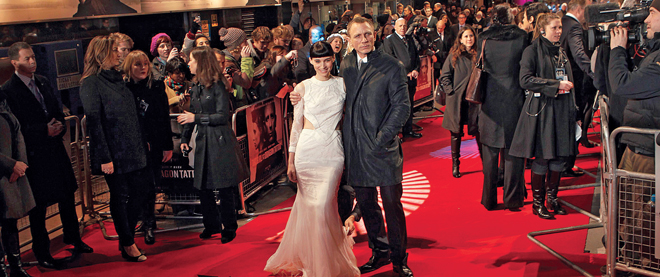What ‘Dragon Tattoo’ and ‘Forrest Gump’ have in common
Many of the greatest moments in movies are the result of astute directors grasping the significance of scenes novelists wrote but ignored
Joel Ryan/AP
Share

Christmas holidays are a popular time for movies, and this season none seem as eagerly anticipated, both by movie lovers and book readers, as The Girl With the Dragon Tattoo. Will either be disappointed?
The original novel by the late Swedish writer Stieg Larsson is an international publishing phenomenon that’s single-handedly created a new crime genre of Nordic noir. The movie doesn’t open until Dec. 21, but it’s already creating its own controversy. New Yorker magazine recently broke a press embargo to publish a favourable review of the movie. (Maclean’s review will appear online next week.) Larsson’s novel is dismissed as “pulpy and sensational,” while director David Fincher’s movie version is a “mesmerizing piece of filmmaking.”
Moviegoers can’t yet judge for themselves, but the New Yorker’s assessment seems a fair bet. Despite its global success, Larsson’s novel is, by any reasonable criteria, a run-of-the-mill pulp thriller marked by flat writing, uneven pacing and frequently tiresome exposition. It is a mediocre book enlivened only by clever marketing, an exotic location and one memorable character: dragon-tattooed Goth hacker Lisbeth Salander.
In other words, it has all the makings of a great movie.
Conventional wisdom holds that movies based on books are always inferior to their source material. Anyone who has ever fallen in love with a novel seems inevitably disappointed by the subsequent movie version because of cast, plot changes or a host of other minor details. And yet the opposite is true just as often, and perhaps more frequently. The Girl With the Dragon Tattoo looks to be the latest in a long list of books greatly improved by a trip to the cinema.
Frankenstein by Mary Wollstonecraft Shelley can be considered the granddaddy of all movie upgrades. The original Victorian novel is full of tedious philosophical debate framed by a series of long-lost letters. The dramatic scene in which the monster, called Adam, comes to life is tossed off in just two sentences. The true genius behind the modern version of this story is the now-forgotten 1920s playwright who tossed out most of Shelley’s philosophizing and produced a lean, riveting tale of an experiment gone horribly wrong.
In fact, many of the greatest moments in movies are the result of astute directors grasping the significance of scenes novelists wrote but ignored. Like Frankenstein’s reanimation, the shower sequence in Robert Bloch’s Psycho lasts just a few sentences; the author spends more time describing the furniture in Norman Bates’s parlour. In the hands of Alfred Hitchcock, however, Bloch’s brief description of this bizarre murder is transformed into the most-talked-about scene in the history of Hollywood.
And could anyone who read Michael Ondaatje’s The English Patient honestly claim to know what was going on? Anthony Minghella’s 1996 movie version thankfully made the plot coherent to exasperated readers everywhere. The same can be said for Apocalypse Now, which makes a clearer statement about the Vietnam War than author Joseph Conrad managed to do on the Belgian Congo in his characteristically obscure novella Heart of Darkness.
Bringing proper attention to overlooked scenes or providing coherence for the masses has allowed many movies to improve on literature. At other times, moviemakers simply lift greatness out of trash. As with The Girl With the Dragon Tattoo, Francis Ford Coppola’s film version of The Godfather saga took a sex- and blood-soaked piece of pulp fiction and turned it into a tale of family and power worthy of Shakespeare.
Movies can also alter the spirit of a story to achieve broader appeal. Think of everything you found charming about the movie Forrest Gump: the feather floating over the opening credits, the signature line that “life is like a box of chocolates,” or Tom Hanks’s graceful innocence as the title character. You won’t find any of that in the original novel. Winston Groom’s Gump is cynical, abrasive and swears like a marine.
Finally, movies offer the possibility of entirely new, and better, perspective. The 1958 novel Red Alert is a dry, preachy tome about a breakdown in the United States’ nuclear command. For director Stanley Kubrick, this was raw material for Dr. Strangelove or: How I Learned to Stop Worrying and Love the Bomb, an arch satire on the absurdity of nuclear war. The closing image of actor Slim Pickens (as Major T.J. “King” Kong) riding an H-bomb to Earth like a bucking bronco is, alongside Hitchcock’s shower scene, an unforgettable moment of film sublimity. And it’s nowhere in the book.
There are, of course, countless examples of movies based on popular books that have failed miserably (Mommie Dearest, The Bonfire of the Vanities, Doctor Dolittle, All the Pretty Horses). But is the book always better? Certainly not.